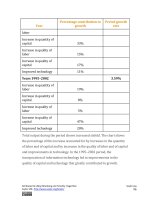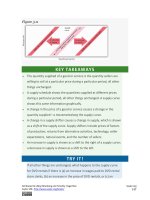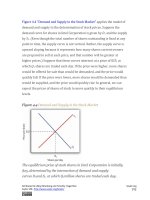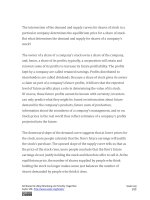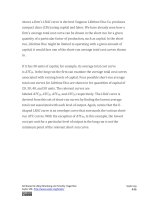Authors libby rittenberg 764
Bạn đang xem bản rút gọn của tài liệu. Xem và tải ngay bản đầy đủ của tài liệu tại đây (524.91 KB, 1 trang )
Higher Wages and Other Union Goals
Higher wages once dominated the list of union objectives, but more recent
agreements have also focused on nonwage issues involving job security,
health insurance, provision of child care, and job safety. Unions such as the
United Auto Workers have negotiated contracts under which members
who are laid off will continue to receive payments nearly equal to the
wages they earned while on the job. They have also pushed hard for
retirement pensions and for greater worker involvement in management
decisions.
Union efforts to obtain higher wages have different effects on workers
depending on the nature of the labor market. When unions confront an
employer with monopsony power, their task is clear: they seek a wage
closer to MRP than the employer is paying. If the labor market is a
competitive one in which wages are determined by demand and supply,
the union’s task is more difficult. Increasing the wage requires either
increasing the demand for labor or reducing the supply. If the union
merely achieves a higher wage in the absence of an increase in demand or
a reduction in supply, then the higher wage will create a surplus of labor,
or unemployment.
Increasing Demand
The demand for labor in a competitive market is found by summing
the MRP curves of individual firms. Increasing demand thus requires
increasing the marginal product of labor or raising the price of the good
produced by labor.
Attributed to Libby Rittenberg and Timothy Tregarthen
Saylor URL: />
Saylor.org
764
